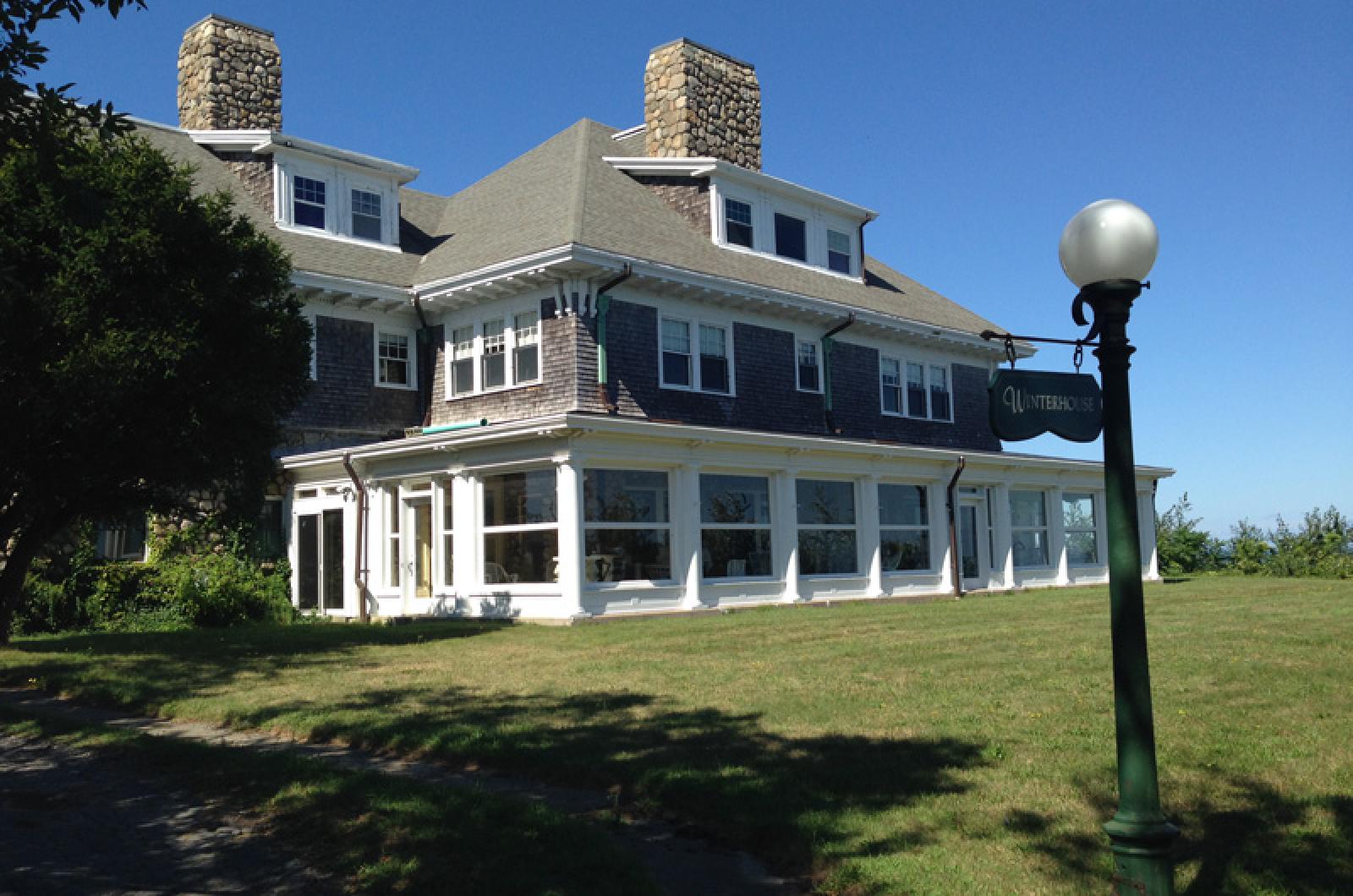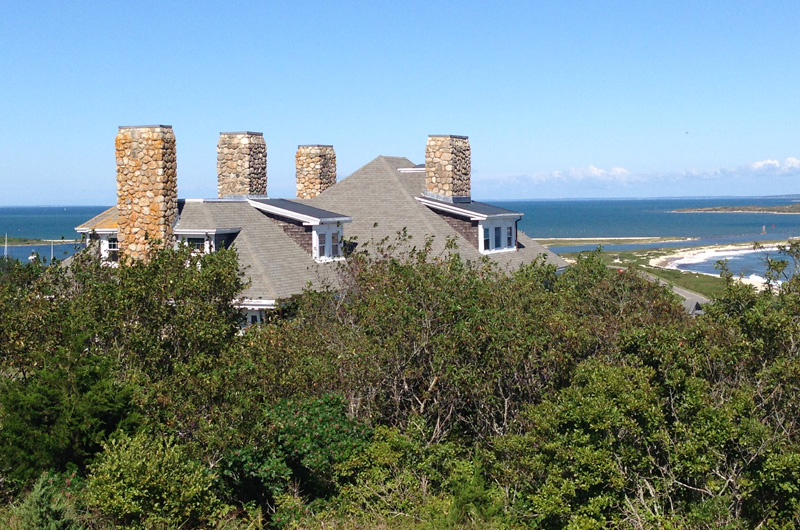A Vineyard hotelier with plans to convert a historic Cuttyhunk house into a resort has halted the process amid vocal objections from residents on the tiny island.
Mark Snider, owner of the Winnetu Oceanside Resort, Mattakesett Properties in Katama and the Nantucket Hotel and Resort, first saw the Winter House while visiting Cuttyhunk last August with his wife.
“We saw the building and it had been shuttered. It was sad,” he told the Gazette by phone. That was when the idea of buying the property and turning it into a resort occurred to him. Mr. Snider said he saw it as a catalyst to help Cuttyhunk economically as well as to update the historic house that is intrinsically tied to the island community. But he was adamant that the proposal would only move forward if it had community support.
And it did not.
This month, the Cuttyhunk community, both year-round and seasonal, overwhelmingly spoke out to ask Mr. Snider not to proceed with his plans. After hearing the response, he decided to no longer pursue the plan, he told the Gazette.
“There was a very passionate dialogue on-island about what their own desires are,” he said. “I didn’t want to be difficult about it. I listened to a lot of people, respected what they had to say, and moved on.”
The Winter House was built 100 years ago by William Madison Wood, an Edgartown man, as a wedding present for his son. Mr. Wood was the president of the American Woolen Company. Though used mainly in summer, the house was equipped for year-round living, thus the name Winter House, according to a Cuttyhunk Historical Society document written by Ethel Twichell.
Mr. Wood’s granddaughter Oriel Wood Ponzecchi owned the Winter House until she died two years ago. It is now held in her estate. The deal with Mr. Snider was worked out privately; the house had not been placed on the market yet.
Gail Blout, chairman of the Gosnold selectmen who spends seven to eight months on the island, said Mr. Snider was adamant about including the community in the decision process. But ultimately, she said, the proposal was just too big for Cuttyhunk to manage.
“The major concerns expressed were the size and scope of the proposed development and the impact it would have on our resources,” she said. Those concerns included electricity, wastewater, solid waste and water amenities.
Mr. Snider’s plan included adding onto the iconic stone house, building about 30 new rooms, a restaurant, a swimming pool and applying for a liquor license.
Gosnold is a dry town, Cuttyhunk is a dry Island and swimming pools are currently banned. Ms. Blout said the liquor license was a hotly-contested issue, though the community was divided over the entire plan. She said Cuttyhunk is small, laid back and quiet, a place where people come to swim, fish and walk. There are few services and almost no commercial enterprises save a general store and a few small summer businesses on the harbor. There is the library, historical society and a school teacher who sells pizzas out of his garage in the summer — so a resort at the Winter House would be a huge shift. There are two private inns on the island that do not serve food.
Ms. Blout said the community also sees the Winter House as a large part of the history of the island.
“It’s been a part of the community for almost 100 years,” she said. “It’s always been part of the community and Mrs. Ponzecchi was a real benefactor for the town.”
Mrs. Ponzecchi donated land for conservation and for the historical society, she also said.
Sarah Berry, a Gosnold selectman and long range planning committee member who lives on the island six months a year, said some people felt developing Winter House into a resort would bolster the year-round population on the island, which has dwindled dramatically in recent years.
“There used to be 40 to 50 people, and that felt like there was a good group here,” she said. Now there are about 15 people. “We started to think a lot about ways to repopulate the island and Mark Snider’s plan was viewed as possibility,” Ms. Blout said. “It would provide jobs six to eight months of the year.”
Cuttyhunk is currently trying to bring broadband to the island to encourage its working population to stay longer, she said.
Situated at the tip of the Elizabeth island chain, Cuttyhunk covers about 500 acres, with half of it privately owned or in conservation.
“It’s not like the Vineyard or Nantucket where there are other stores,” she said. “It [a resort hotel] would be the dominant thing on the island in many people’s eyes.”
Though the issue was divisive, Ms. Berry said it brought the community together to engage in conversation about the future.
“It was the first time that a meeting in the town, town hall was packed we had to move it to the church,” she said. “We had someone videotape it.”
A community-organized online survey was taken by 301 people in 23 hours, according to a post on a public Cuttyhunk Facebook page. The results of the survey showed strong opposition to the proposed Winter House project, with 10 per cent in favor and 78 per cent opposed. Votes were further broken down between year-round registered voters, seasonal registered voter, landowners and summer residents, renters and boaters.
With Mr. Snider’s proposal off the table, Cuttyhunkers continue to discuss the fate of the Winter House. Suggestions have included a nine-room bed and breakfast, a large, community-minded family house, a yoga retreat, a restaurant and a community center. However, the cost of electrical, heating and plumbing upgrades could be prohibitive. And then there is the island factor.
“A nightmare is somebody that doesn’t fit in with the island sense of community,” said Ms. Berry. “Whatever it is, you hope that it’s someone or something that benefits the community.”








Comments (21)
Comments
Comment policy »